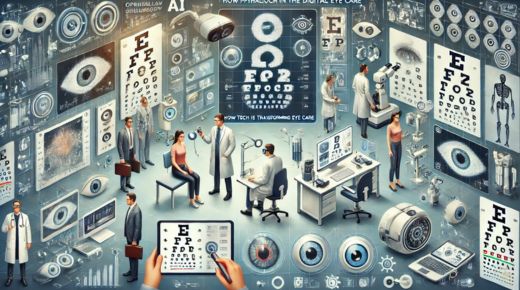In today’s world, technology shapes many aspects of our lives, including eye care. Ophthalmology sees rapid changes thanks to digital tools. These advancements help detect and treat conditions like Glaucoma oviedo. New devices and apps are making eye care more accessible and efficient. Let’s explore how technology is transforming eye health.
Revolutionary Diagnostic Tools
Modern diagnostic tools have improved how we identify eye conditions. Devices such as optical coherence tomography scans create detailed images of the retina. These images help in early detection of diseases. Early detection often leads to better outcomes.
Another tool is the digital fundus camera. It captures images of the inside of the eye. These images help in monitoring changes over time. These devices make it easier for specialists to track the progression of eye diseases. For more on these technologies, visit the National Eye Institute.
Telemedicine in Eye Care
Telemedicine is becoming common in eye care. It allows patients to consult with specialists remotely. This can be especially helpful for those in rural areas. It reduces the need for travel and makes follow-up care easier.
Many eye conditions can be managed through virtual visits. These visits can include video consultations and remote monitoring of eye health. Telemedicine can enhance access to care and improve patient satisfaction.
Smartphone Apps and Wearables
Smartphone apps and wearable devices are changing how we monitor eye health. Apps can remind users to take breaks from screens. This can help reduce digital eye strain.
Wearable devices can monitor changes in vision and eye pressure. This information can be shared with doctors. This allows for more personalized care and quick response to changes.
Data Table: Comparing Traditional vs. Digital Eye Care Methods
| Aspect | Traditional Eye Care | Digital Eye Care |
| Diagnostic Tools | Limited to manual techniques | Advanced imaging and AI |
| Access to Specialists | In-person only | Telemedicine options available |
| Monitoring | Infrequent, during visits | Continuous, via wearables |
Artificial Intelligence in Ophthalmology
Artificial intelligence (AI) plays a growing role in eye care. AI algorithms can analyze images of the eye for signs of disease. These algorithms can often identify conditions as well as a specialist can.
AI also assists in predicting outcomes. This helps in planning treatments more effectively.
Challenges and Considerations
Despite the benefits, there are challenges in digital ophthalmology. Security of patient data is a concern. Ensuring access for all patients is another challenge. Some patients may not have the technology needed for digital care.
It’s important for healthcare providers to address these issues. Providing training and resources can help patients feel more comfortable with technology. Ensuring inclusivity in eye care should remain a priority.
The Future of Eye Care
Technology continues to evolve. This evolution promises even more advancements in ophthalmology. Future innovations may include more comprehensive diagnostic tools and enhanced AI capabilities. These will further improve patient care and outcomes.
The integration of technology with traditional care methods offers a balanced approach. This ensures that patients receive the best of both worlds. The goal remains the same: to enhance vision and improve quality of life.
Embracing digital advancements is key to the future of eye care. As technology grows, so does the potential for better vision health worldwide.




